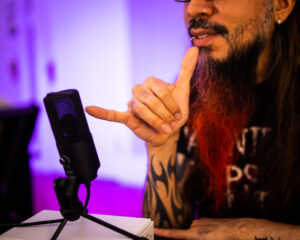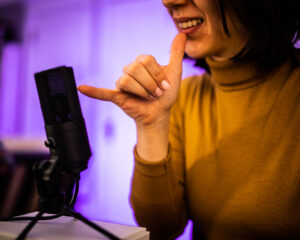Home » Articles posted by Stephanie Love
Author Archives: Stephanie Love
DOING ETHNOGRAPHY IN THE TIME OF COVID-19
By: Miryam Nacimento and Agustina Checa
Was your ethnographic research suspended because of Covid? Are you having trouble finding ways to move forward? In this short piece, we reflect on methodological strategies for advancing ethnographic research in these difficult times.
Ever since March 2020, our everyday lives have been turned upside down. As social restrictions were enforced, working remotely became “the new normal”. For the academic world, this not only meant remote teaching and an overabundance of virtual meetings and webinars, but also the encounter with seemingly insurmountable barriers for conducting onsite research. Social scientists with ethnographic projects had to suspend fieldwork plans and rethink methodologies and practices for continuing with their research objectives amid the uncertainty, overflow of (dis)information, and personal distress. After a year, ethnographers have come up with different strategies and innovative approaches to adapt their investigations to the changing conditions while also pushing for a critical revision of traditional ideals surrounding ethnographic fieldwork.
Initiatives such as Patchwork Ethnography[1], a collaborative research project led by anthropologists whose plans were disrupted by the pandemic, saw in the current crisis an opportunity for questioning established expectations of fully immersive long term fieldwork, thus also highlighting well-known limitations posed by common everyday situations such as family obligations, scarce access to funding, among others (Gökçe, Varma, and Watanabe 2020.). Distancing themselves from oftentimes unattainable research mandates, this group of researchers proposes Patchwork Ethnography as a method based on short-term visits and the use of fragmentary data, albeit without compromising the development of a deep commitment with research subjects and the reliance on contextual knowledge.
Other voices have also found similarities between the current research conditions and the restrictions long faced by researchers who have dedicated themselves to study difficult-to-access fields. For instance, we could learn several lessons from the experiences of ethnographers that have previously analyzed conflict-ridden situations, closed societies, or people with power (Gusterson 1997). Some of their strategies for data collection include the interaction with research subjects in social media and online conferences, virtual interviews, analysis of mass media (TV and radio broadcasting) as well as the study of cultural manifestations (music, art, and performance).
The revision of grey literature such as government reports and the incorporation of a historical perspective through archival work are additional methodological alternatives for data collection. Finally, digital ethnography or the study of digital media and their social worlds could also constitute a powerful methodology able to enrich your original object of study. In forthcoming blog posts, we will give some examples on how to start framing your digital ethnography project and discuss some of the tools you could use to start gathering data. Stay tuned!
If you want to continue exploring practices and tools for your digital ethnographic project, we encourage you to attend the second workshop on Digital Ethnography: Finding and Working with Online Data. Register here: https://forms.gle/4b53dGBLB8RTHEbdA
References
Günel, Gökçe, Saiba Varma, and Chika Watanabe. 2020. “A Manifesto for Patchwork Ethnography.” Member Voices, Fieldsights, June 9.
Gusterson H. 1997. Studying up revisited. PoLAR: Political and Legal Anthropology 20(1): 114–119.
[1] https://culanth.org/fieldsights/a-manifesto-for-patchwork-ethnography
HOW TO USE AN EXTERNAL MICROPHONE
By: Mike Mena, Ph.D. Candidate
If you are wondering how to make your video recordings, PowerPoint voice-overs and/or remote lectures more compelling, the first thing to upgrade is your microphone! There are hundreds of microphones to choose from—from budget to expensive, simple to complex, beginner to professional, and the list goes on. However, how we actually use the microphone in all these scenarios is always the same. What follows is a simple technique to get the best possible audio quality out of any microphone, including the one you might already own.
How to use an external microphone?
There is one common mistake most of us make when we use our microphone for the first time: we are too far away from it. Most external USB microphones come with a desktop stand—which is amazingly convenient! But, to get the most out of any microphone, there is one technique that is crucial to getting that “radio announcer” voice, and, it’s pretty simple:
Position your mouth about 8-12 inches away from the front of the microphone.
But, who has time to bring out a measuring tape? I suggest using the “surfer hang loose” hand sign. It starts with making the “hang loose” gesture. Like this:
THE “HANG LOOSE” HAND GESTURE


Whether you have big hands or small hands, this is about 8-12 inches from tip-to-tip. The “hang loose” measurement is a quick way to estimate how far your mouth should be from the microphone.
The idea is not to be too close or too far from your microphone!
THE “HANG LOOSE” MEASUREMENT IN ACTION


If the microphone is too low when it is sitting on your desk, you can try putting a stack of books underneath it to prop it up much closer to your mouth.
Like any piece of audio equipment, it takes a bit of practice to get the most out of it. Your first recording may not be amazing: you may speak too loud at times, you may speak too softly at times. But, learning how to control the volume of your voice is quite simple—it just takes a little bit of practice.
Upgrading your microphone in combination with the “hang loose” measurement is the first step to creating better quality videos and voice-overs for your students.






